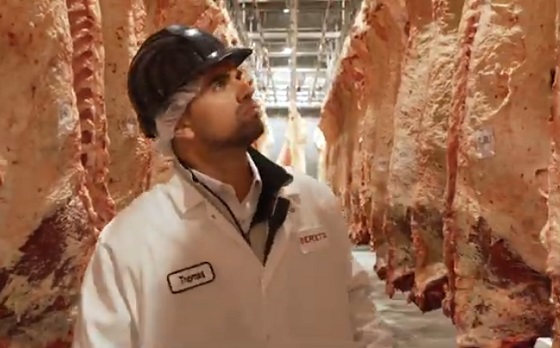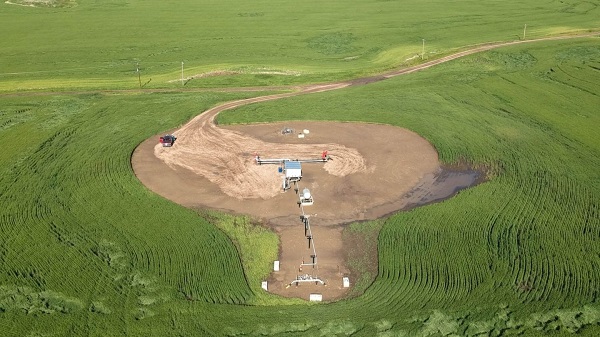Alberta
Enserva key to unlocking Canadian energy: CEO Gurpreet Lail

Photo for the Canadian Energy Centre by Dave Chidley
From the Canadian Energy Centre
By Cody Ciona“We are in the quality of life business, and that’s exactly what our business provides.”
A lawyer by education, with terms in high profile roles as executive director of STARS Air Ambulance and CEO of Big Brothers Big Sisters Calgary, Gurpreet Lail is no stranger to working in organizations dedicated to helping everyday Canadians.
Now two years into her term as the president and CEO of Enserva , formerly known as the Petroleum Services Association of Canada, Lail’s work continues to focus on improving quality of life.
She has no qualms about stating her support for the work the energy industry is doing.
“I will be the first one to say stop apologizing for the work we do, because the work that we do actually, no pun intended, fuels Canadians. We are in the quality of life business, and that’s exactly what our business provides.”
Enserva represents the service, supply and manufacturing sectors of the Canadian energy industry. This includes companies that supply hydraulic fracturing services to equipment suppliers and oilfield construction.
As the energy industry innovates towards more sustainable, low emissions products, she is confident that Enserva’s membership is more than up for the challenge.
“We are all moving to a new energy mix, and we all realize that as an industry we’re going to need new forms of energy to help us meet the demands of the future, especially when we look at global demand,” Lail says.
“Every company we represent has been diversifying their business to make sure we have a cleaner future. A lot of our companies are bringing in technology and artificial intelligence processes that are going to help streamline energy well into the future.

Photo for the Canadian Energy Centre by Dave Chidley
Enserva members are unlocking Canadian energy to make the world a better place, she says.
“They bring their services, they bring their supplies, they bring their manufacturing, globally.”
This includes technology used by drilling companies to replace their diesel fleets with natural gas power and other alternative energy sources, which reduces emissions while drilling wells.
“They just want to do good work, they want to make sure we can provide for Canadians, and they want to provide back into the community with community investments,” Lail says.
“You cannot go into rural Alberta or rural Canada and not see energy companies putting up community rinks or helping local hospitals or making sure your local Tim Hortons is still in business.”
Indigenous reconciliation is an ongoing process, and in Canada, where the oil and gas industry employs thousands of Indigenous workers across the country, she says working with those communities is crucial.
“It’s a good thing to do and it’s the right thing to do, and a lot of other industries aren’t quite thinking that way.”
In her eight years at STARS, Lail helped grow the organization to span three provinces and was a leading driver working with Enserva on the annual STARS & Spurs Gala. The event has raised over $20 million, 29 years and counting.
“STARS has become a fabric of our businesses; it helps save lives including those of our members, and we’re proud of that.”
In the ever-changing dynamic of Canada’s oil and gas industry, more women are finding themselves, like Lail, driving the conversation about Canadian energy.
“If there’s young women out there, or women in general I would always tell them to get involved and don’t shy away from coming into the sector,” she says.
Agriculture
Lacombe meat processor scores $1.2 million dollar provincial tax credit to help expansion

Alberta’s government continues to attract investment and grow the provincial economy.
The province’s inviting and tax-friendly business environment, and abundant agricultural resources, make it one of North America’s best places to do business. In addition, the Agri-Processing Investment Tax Credit helps attract investment that will further diversify Alberta’s agriculture industry.
Beretta Farms is the most recent company to qualify for the tax credit by expanding its existing facility with the potential to significantly increase production capacity. It invested more than $10.9 million in the project that is expected to increase the plant’s processing capacity from 29,583 to 44,688 head of cattle per year. Eleven new employees were hired after the expansion and the company plans to hire ten more. Through the Agri-Processing Investment Tax Credit, Alberta’s government has issued Beretta Farms a tax credit of $1,228,735.
“The Agri-Processing Investment Tax Credit is building on Alberta’s existing competitive advantages for agri-food companies and the primary producers that supply them. This facility expansion will allow Beretta Farms to increase production capacity, which means more Alberta beef across the country, and around the world.”
“This expansion by Beretta Farms is great news for Lacombe and central Alberta. It not only supports local job creation and economic growth but also strengthens Alberta’s global reputation for producing high-quality meat products. I’m proud to see our government supporting agricultural innovation and investment right here in our community.”
The tax credit provides a 12 per cent non-refundable, non-transferable tax credit when businesses invest $10 million or more in a project to build or expand a value-added agri-processing facility in Alberta. The program is open to any food manufacturers and bio processors that add value to commodities like grains or meat or turn agricultural byproducts into new consumer or industrial goods.
Beretta Farms’ facility in Lacombe is a federally registered, European Union-approved harvesting and meat processing facility specializing in the slaughter, processing, packaging and distribution of Canadian and United States cattle and bison meat products to 87 countries worldwide.
“Our recent plant expansion project at our facility in Lacombe has allowed us to increase our processing capacities and add more job opportunities in the central Alberta area. With the support and recognition from the Government of Alberta’s tax credit program, we feel we are in a better position to continue our success and have the confidence to grow our meat brands into the future.”
Alberta’s agri-processing sector is the second-largest manufacturing industry in the province and meat processing plays an important role in the sector, generating millions in annual economic impact and creating thousands of jobs. Alberta continues to be an attractive place for agricultural investment due to its agricultural resources, one of the lowest tax rates in North America, a business-friendly environment and a robust transportation network to connect with international markets.
Quick facts
- Since 2023, there are 16 applicants to the Agri-Processing Investment Tax Credit for projects worth about $1.6 billion total in new investment in Alberta’s agri-processing sector.
- To date, 13 projects have received conditional approval under the program.
- Each applicant must submit progress reports, then apply for a tax credit certificate when the project is complete.
- Beretta Farms has expanded the Lacombe facility by 10,000 square feet to include new warehousing, cooler space and an office building.
- This project has the potential to increase production capacity by 50 per cent, thereby facilitating entry into more European markets.
Related information
Alberta
Alberta Independence Seekers Take First Step: Citizen Initiative Application Approved, Notice of Initiative Petition Issued

Alberta’s Chief Electoral Officer, Gordon McClure, has issued a Notice of Initiative Petition.
This confirms a Citizen Initiative application has been received and the Chief Electoral Officer has determined the requirements of section 2(3) of the Citizen Initiative Act have been met.
Approved Initiative Petition Information
The approved citizen initiative application is for a policy proposal with the following proposed question:
Do you agree that Alberta should remain in Canada?
The Notice of Initiative Petition, application, and statement provided by the proponent are available on Elections Alberta’s website on the Current Initiatives Petition page.
As the application was received and approved prior to coming into force of Bill 54: Election Statutes Amendment Act, the Citizen Initiative process will follow requirements set out in the Citizen Initiative Act as of June 30, 2025.
Next Steps
- The proponent must appoint a chief financial officer within 30 days (by July 30, 2025).
- Once the 30-day publication period is complete and a chief financial officer has been appointed, Elections Alberta will:
- issue the citizen initiative petition,
- publish a notice on the Current Initiatives Petition page of our website indicating the petition has been issued, specifying the signing period dates, and the number of signatures required for a successful petition, and
- issue the citizen initiative petition signature sheets and witness affidavits. Signatures collected on other forms will not be accepted.
More information on the process, the status of the citizen initiative petition, financing rules, third party advertising rules, and frequently asked questions may be found on the Elections Alberta website.
Elections Alberta is an independent, non-partisan office of the Legislative Assembly of Alberta responsible for administering provincial elections, by-elections, and referendums.
-

 Alberta12 hours ago
Alberta12 hours agoAlberta Independence Seekers Take First Step: Citizen Initiative Application Approved, Notice of Initiative Petition Issued
-

 Crime11 hours ago
Crime11 hours agoNational Health Care Fraud Takedown Results in 324 Defendants Charged in Connection with Over $14.6 Billion in Alleged Fraud
-

 Health10 hours ago
Health10 hours agoRFK Jr. Unloads Disturbing Vaccine Secrets on Tucker—And Surprises Everyone on Trump
-

 Bruce Dowbiggin13 hours ago
Bruce Dowbiggin13 hours agoThe Game That Let Canadians Forgive The Liberals — Again
-

 Alberta1 day ago
Alberta1 day agoCOVID mandates protester in Canada released on bail after over 2 years in jail
-

 Business1 day ago
Business1 day agoCanada’s loyalty to globalism is bleeding our economy dry
-

 Crime2 days ago
Crime2 days agoProject Sleeping Giant: Inside the Chinese Mercantile Machine Linking Beijing’s Underground Banks and the Sinaloa Cartel
-

 Alberta2 days ago
Alberta2 days agoAlberta uncorks new rules for liquor and cannabis






